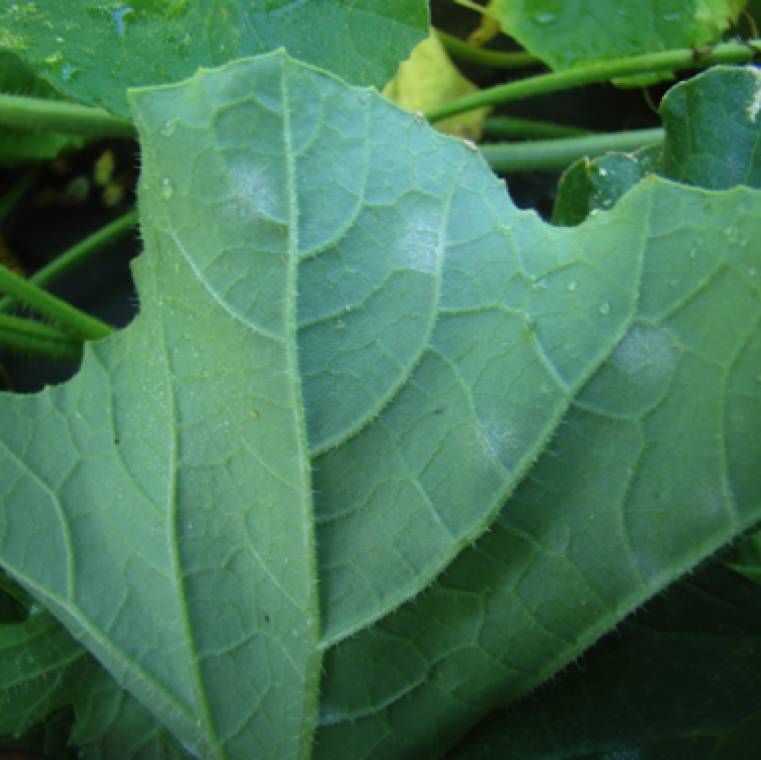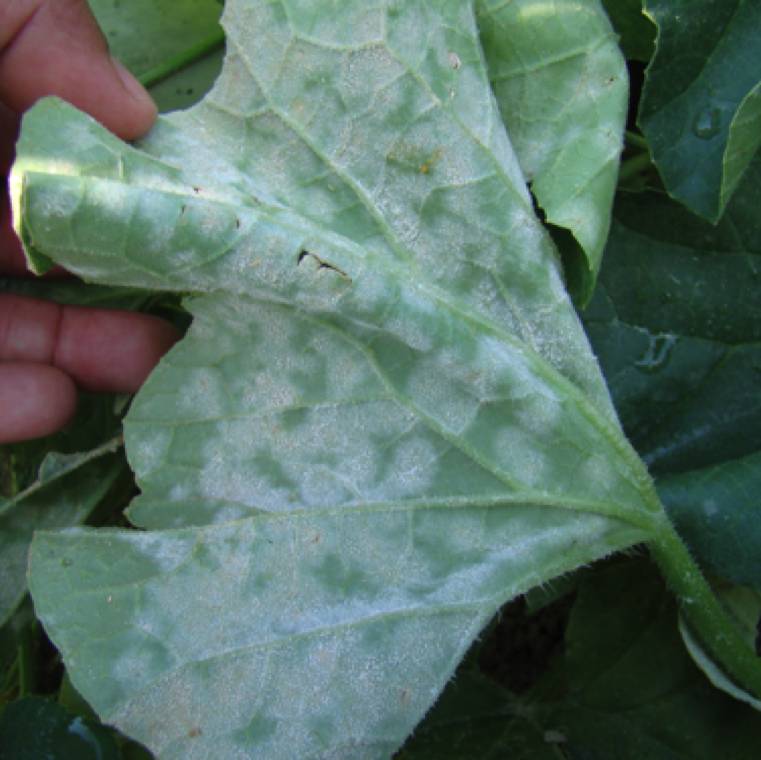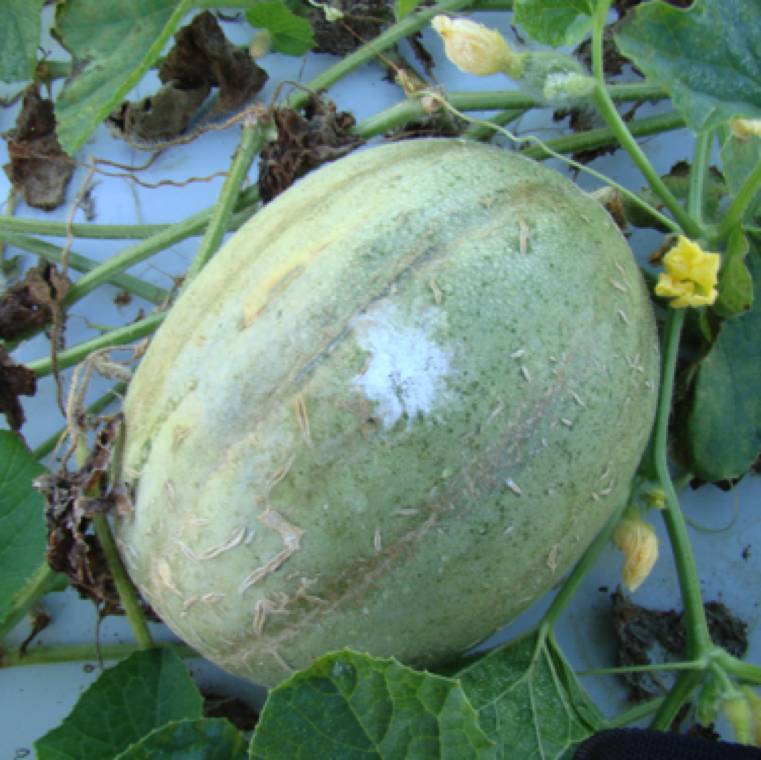Muskmelon
Powdery Mildew

Podosphaera xanthii, Golovinomyces cichoracearum
Fungal Disease

Podosphaera xanthii, Golovinomyces cichoracearum
Fungal Disease

Podosphaera xanthii, Golovinomyces cichoracearum
Fungal Disease

Podosphaera xanthii, Golovinomyces cichoracearum
Fungal Disease

Podosphaera xanthii, Golovinomyces cichoracearum
Fungal Disease
Powdery mildew is a significant fungal disease affecting cucurbits in both greenhouse and field production. It is easily recognizable by the white, powdery growth on leaves, which can lead to severe crop damage if not managed properly.
Symptoms:
- White Powdery Appearance: The most obvious symptom is the white, talcum-like growth that develops on the leaves, particularly on the undersides in the early stages.
- First Signs: Symptoms often first appear on shaded leaves or on the underside of muskmelon leaves, where conditions are more favorable for the fungus to thrive.
- Severe Infection: In advanced stages, leaves can become heavily coated with the white powdery growth, spreading to both the underside and upper surface.
- Conducive Conditions: Low light intensity and dense canopy cover promote the onset and spread of powdery mildew.
- Necrosis and Plant Death: Affected areas may turn necrotic, leading to withering and, in severe cases, plant death.
- Impact on Fruits: While the disease rarely affects fruits, white, fluffy growth can occasionally appear, reducing their marketability.
Proper management through early detection, canopy control, and fungicide use is critical to prevent powdery mildew from severely impacting cucurbit crops.




